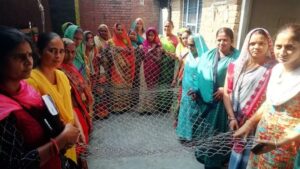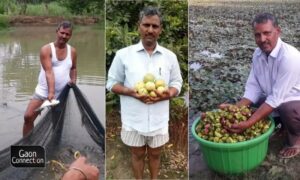The biggest worry farmers face in potato cultivation is the early scorch disease that can ruin their entire crop. But now, agricultural scientists of Acharya Narendra Deva University of Agriculture and Technology, Ayodhya have developed a culture that will prevent the blight and save the crops.
“Sometimes farmers lose more than fifty per cent of their crops to this early scorch disease. But we have developed a bacteria culture that will prevent the disease,” Adesh Kumar, a scientist from the university, told Gaon Connection.
A fungus called Alternaria causes the blight in the potatoes. Three to four weeks after the sowing of the crop, the leaves at the base of the plants start developing white patches that grow and change colour as the disease progresses. The bigger leaves then start withering and falling off and the stems also develop brown and black patches on them.
“We extracted the bacillus sirius bacteria from the soil and tested it in the lab on the fungus that causes the early scorn disease,” Kumar explained. “We found that it was very effective against the fungus that caused the blight in potatoes,” he added.
Also Read: Tackling the menace of leaf roller pests, with nothing more than a plastic rope
The bacteria culture was then sent to Indian Council of Agricultural Research’s (ICAR) National Agriculturally Important Microbial Culture Collection centre at Mao in Uttar Pradesh. It was further tested there and found to be effective against the potato disease.
While the culture has been widely tested in the University labs, it will be a while before it is commercially available to the farmers.
Also Read: Food fortification, the new panacea for nutritional deficiency
“We are also setting up a production lab in the University that should be ready in a couple of years in which case the culture can be produced commercially here as well,” Kumar said.
The techniques to apply the culture to the crop is still in the experimenting stage. “It can either be developed in such a way that it is sprayed on the potato crops or the soil itself can be treated with it,” Adesh explained.
Read this report in Hindi



















